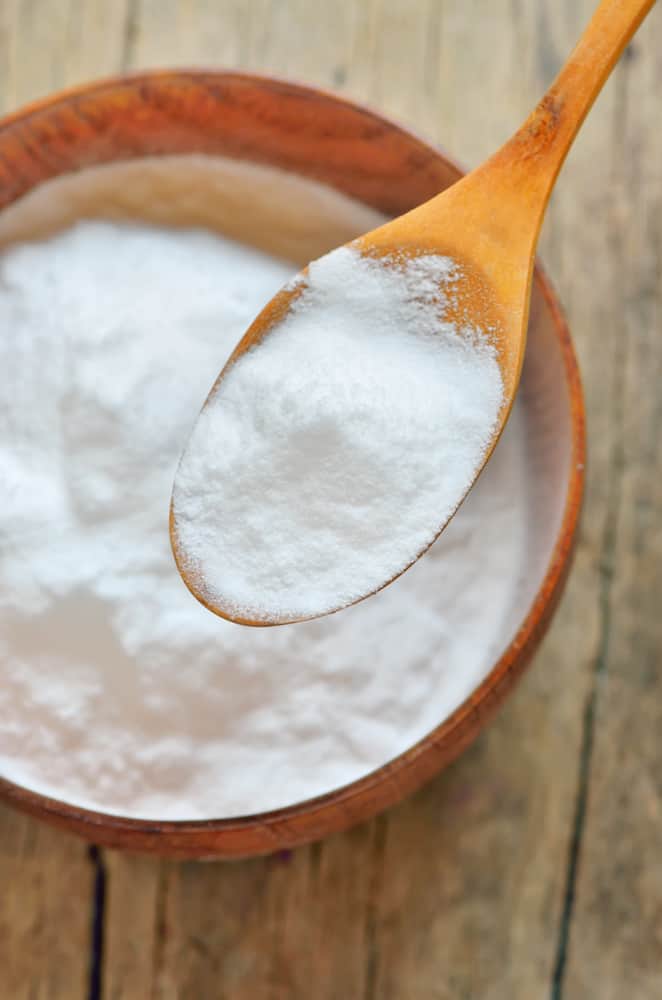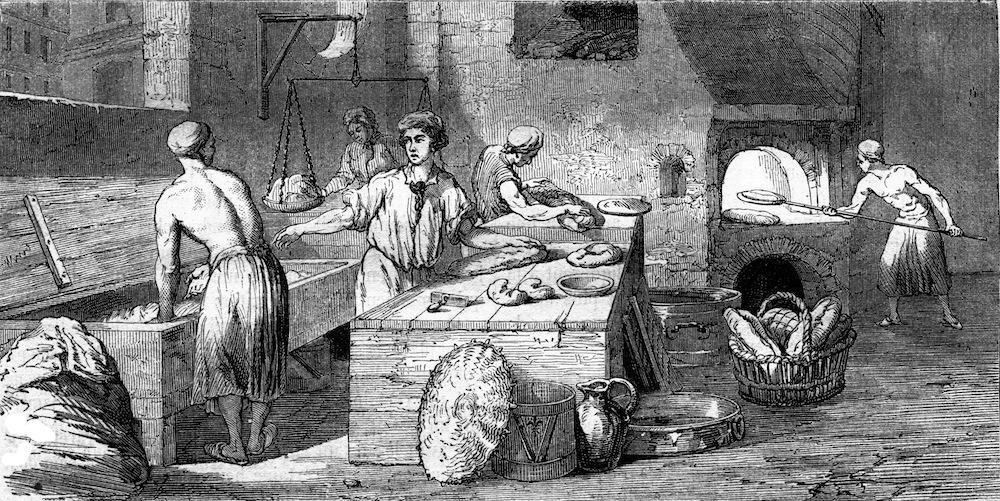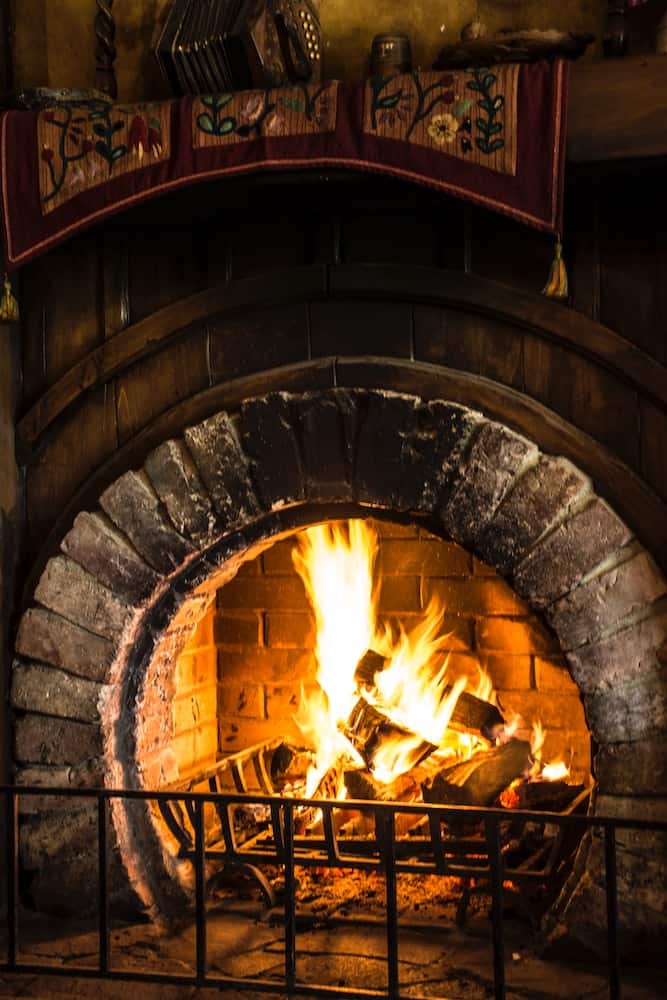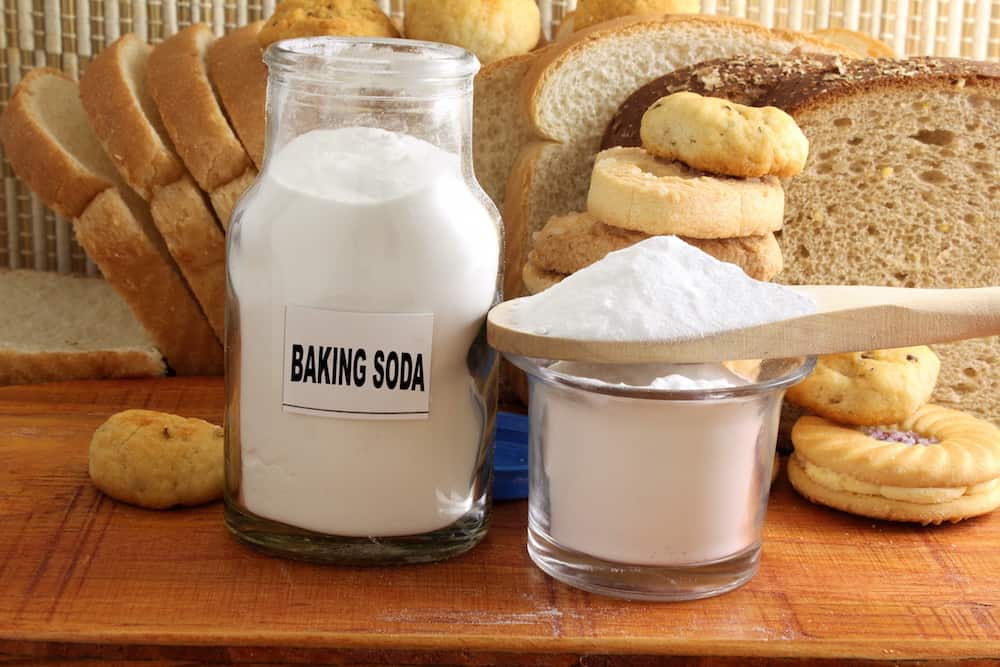
If you’ve ever made a cake, cookies, quick breads, or muffins before, chances are you’ve used baking soda. You might have even cleaned with it, or slipped a box into your fridge to make it smell better.
It’s a ubiquitous part of the modern kitchen and home.
But what is baking soda? Why does it work? And has it always been around?
Let’s get to answering these questions and demystifying this product!
Before Baking Soda
If there’s one thing to learn about humans, it’s that we have always loved alcohol and carbs.
Throughout history, pretty much wherever you go, people have eaten bread in some form. And while flatbreads and crackers are perfectly tasty, leavened bread – that is, bread that’s been risen to develop flavor and texture – tastes even better. Throughout most of history, they achieved leavening through yeast.
Yeast

(illustration by Magasin Pittoresque, 1857)
While today, we can buy dried yeast from the supermarket in conveniently pre-measured packets, it wasn’t so easy for our ancestors. They had to make it themselves!
They did this a few ways. Some bakers, especially professional bakers, would obtain brewer’s yeast from local brewers or distillers. The byproduct of alcohol fermentation, brewer’s yeast was effective at making baked goods rise. However, it would sometimes lead to the final bread or cake having a bitter flavor like beer. Not ideal.
Most bakers, especially housewives, would make a starter themselves out of flour and water. If you’ve ever made a sourdough starter, you’ll know what I’m talking about. That starter gets really smelly the longer it sits around – in a good way! You can then incorporate part of this starter into your bread dough, and the good bacteria in your starter will release carbon dioxide, leavening your bread for you.
But there’s a problem with that. Making your own yeast is an endeavor. You have to make it and maintain it, and it’s easy to have your starter go bad on you, whether from fluctuating temperatures or unwanted bacteria. Then you have to start it all over again.
And then there’s another issue. Making bread with this yeasty starter took a long-ass time. While modern breads, made with quick-action dry yeast, take only an hour or two to rise, that wasn’t the case back then. Like a sourdough loaf today, old-fashioned breads took half a day or even a full day to rise.
That’s a lot of work.
Is there no easier way ?!
Pearlash
One solution came about in the 1600s, when people discovered a new leavening agent called pearlash. This was an alkaline, potassium-based salt, a cousin to modern-day baking soda.

Housewives and bakers would make it by soaking their fireplace ashes in order to make lye. They would then boil that lye to dehydrate it and leave the white, powdery alkaline salt.
Like baking soda, pearlash was a chemical leavener. When exposed to an acid such as lemon juice, the potassium carbonate in the pearlash would fizz, producing carbon dioxide, which would help raise breads and cakes in far less time than yeast.
It was also a lot more stable than yeast, as it could be stored easily and wouldn’t go bad if it wasn’t maintained.
But the process of soaking and boiling your fireplace ashes was still a lot of work. And since pearlash was made with ashes, it gave a distinct smoky, slightly bitter flavor to baked goods. While this might work for some recipes, it wasn’t the perfect solution to replace yeast.
So there was no super-easy, quick, or taste-free way to bake leavened goods, not up until the mid-1800s. Making your own yeast or pearlash and rising your bread for a million hours was the way of the world for a long-ass time.
And then, bam. A new product hit the market, and her name was baking soda.
Baking Soda: The Origin Story
In the late 1700s, a French chemist named Nicolas LeBlanc figured out a process to create sodium carbonate, or soda ash, from common salt and a series of chemical reactions. It was later discovered that you can make baking soda from sodium carbonate and carbon dioxide.
By 1846, the first factory to make baking soda was established in America. But the LeBlanc process was pricy and not very convenient. Manufacterers couldn’t keep up with the demand for this new product.
In the 1860s, a new method came onto the scene: the Solvay process. Similar to the LeBlanc process, this method is a series of chemical reactions that forms soda ash, which is then refined to create baking soda. This method was more cost-effective and produced comparatively less pollution. It was quickly adopted around the world – and is even still used to this day.
However, the chemicals used in this process are still pollutants and difficult to dispose of without creating a negative environmental impact. So these days, manufacturers are relying more heavily on mining to reduce their environmental impact.
Soda ash can naturally be found in a mineral called trona. The biggest natural deposit of trona in the world can be found in the Green River Formation in Wyoming and Utah. This mineral is common and plentiful, and there’s less of an environmental impact mining it than making it artificially.
While factories using the Solovay process can still be found around the world, most American baking soda is mined from natural trona deposits.
Baking Soda And Baking
So enough history. Let’s get back to baking.
Why baking soda? What makes it such an important, useful ingredient?

Baking soda is an alkaline salt, which means that it reacts to acidic foods like lemon juice. When this happens, it fizzes, creating carbon dioxide. This creates air bubbles, leavening (or rising) your baked goods and creating a great, light texture.
It’s also fast-acting, so you can put your cakes, quick breads, and cookies straight into the oven without letting them rise for a few hours first, like you would with yeast.
But why is baking soda the best choice? Why has it been the go-to solution since the 1860s?
One reason why baking soda is so useful is that it’s a great, all-purpose choice. Remember how we talked about pearlash earlier, that stuff that they made from fireplace ashes? Unlike pearlash, baking soda doesn’t have a strong aftertaste when you bake with it, letting your other flavors shine as they should.
Baking soda is also cheap and plentiful. Whether mined or artificially made, you can now buy one-pound boxes for under a dollar. That means it’s an easily accessible product for just about everyone.
And remember all that work bakers used to go through, creating and maintaining their own yeast? Baking soda is a simple, low-maintence product. Once you buy it, you can store it on a cool, dry shelf and have it last you for months.
Overall, it’s very clear to see why baking soda has been the best solution for chemical leavening since the mid-1800s.
Even better, it also has many other uses around the house!
What else is baking soda good for?
If you’re a vegan – or just trying to eat more plant-based – chances are you’re at least a little bit of a hippie. You’re probably looking for some more natural, non-toxic ways to clean your house.
As it turns out, baking soda is great for cleaning. It’s gentle but lightly abrasive, so you can scour with it without scratching up your house. I regularly use it to scrub out tea stains from mugs, or grime from sinks.
It’s also a great deodorizer. One time, I left my favorite sweater lie around while it was damp, and it developed a gross, musty smell. 🙁 As it turns out, you can deodorize clothes by washing them with a cup of white vinegar, and then another wash with a cup of baking soda (don’t put laundry soap in with either of these wash cycles).
My sweater now smells like new!
But why is baking soda so good for cleaning?
Without getting too technical, baking soda balances the pH levels of things it comes into contact with. Most smells are acidic, and baking soda reacts to the acidity of the smell particles, neutralizing them and making them less acidic (and less smelly).
This works the best when you’re scrubbing something (like a cutting board) with baking soda paste, or washing your laundry in water with baking soda. That’s because you’re directly applying the baking soda to source of the smell.
It’s inconclusive if putting a box of baking soda in your fridge really works to make it less smelly. The chance of all of the smelly vapors in your fridge being absorbed by that box of baking soda isn’t likely.
Despite the debate about its effectiveness, the belief that a box of baking soda in your fridge will help is very pervasive: half of American fridges have a box of baking soda in them! It proves that good marketing can go a long way.
Conclusion
Whether you’re baking or cleaning, baking soda is a household staple that’s really modernized home life. This humble powder does a lot for us.
Let’s just be thankful we don’t have to boil our fireplace ashes anymore.

Leave a Reply
You must be logged in to post a comment.